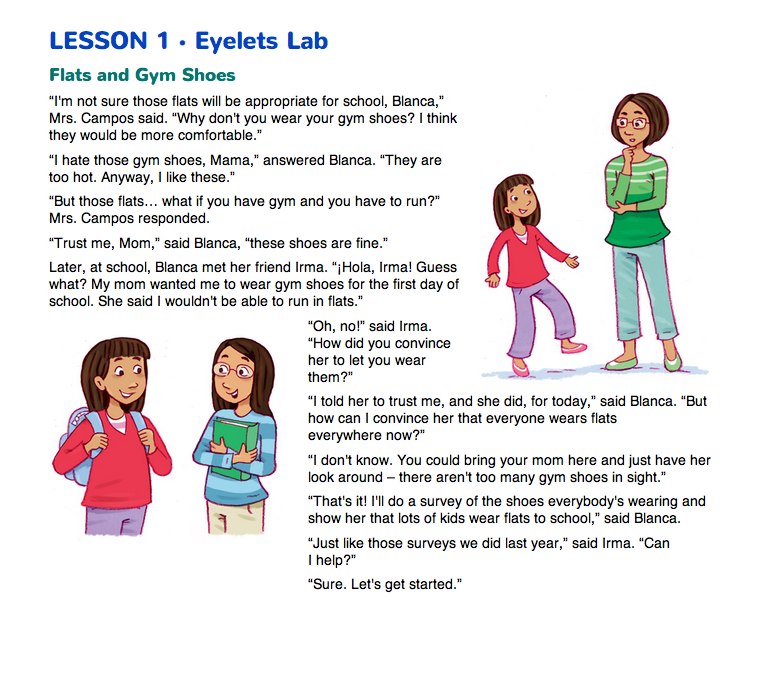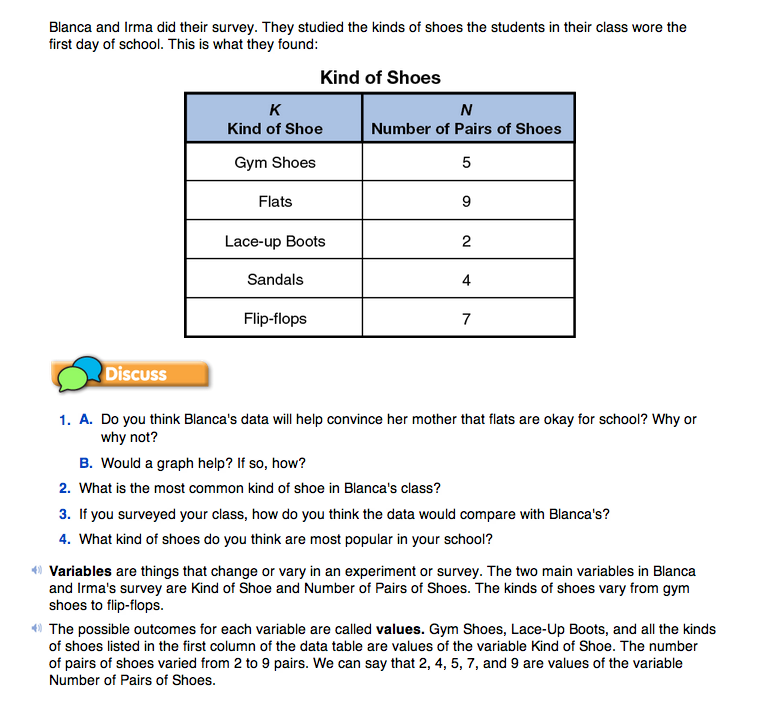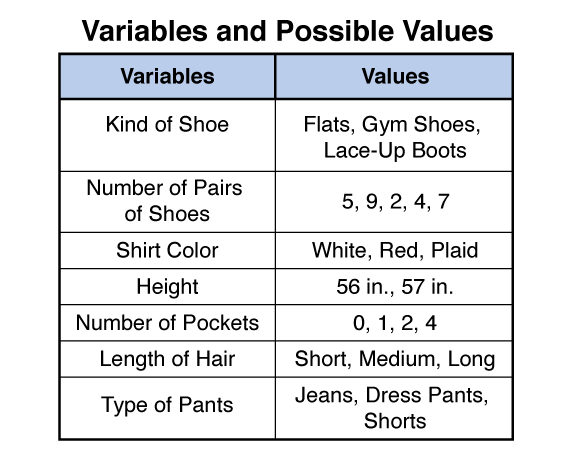Eyelets Lab
Est. Class Sessions: 3–4Developing the Lesson
Part 1. Use Variables: Flats and Gym Shoes
The Eyelets Lab pages in the Student Guide open with a vignette, Flats and Gym Shoes, that uses the context of fashion to review using surveys to gather data to solve a problem.
To build student interest and connection to this lesson, use these or similar prompts to guide a discussion before reading the vignette:
Direct students to the Eyelets Lab pages in the Student Guide. Ask students to read the opening vignette and discuss Questions 1–4 with a partner. Ask several students to share their answers to these questions with the class.
Variables and values are reviewed in the Flats and Gym Shoes section. Point out that a variable is something that changes or varies in an experiment, such as Kind of Shoe and Number of Pairs of Shoes. The possible outcomes for each variable are called values. To help students make the distinction between variables and values, Question 5 asks students to make a table listing variables they may wish to study in a survey in the first column and possible values for each variable in the second column. Figure 1 shows a sample table with some possible entries. Use chart paper or a display to make a class chart with the students' suggestions for surveys.
Question 6 asks students to identify the numerical and categorical variables in the table. For example, in the table in Figure 1, Number of Pockets is a numerical variable since the values are numbers. Length of Hair and Type of Pants are categorical variables since the values for these variables are not numbers. Note that if the values for Length of Hair were given as 15 in. or 1 cm, then Length of Hair would be considered a numerical variable.
Assign Home Practice Parts 1–2 after Part 1 of the lesson.














